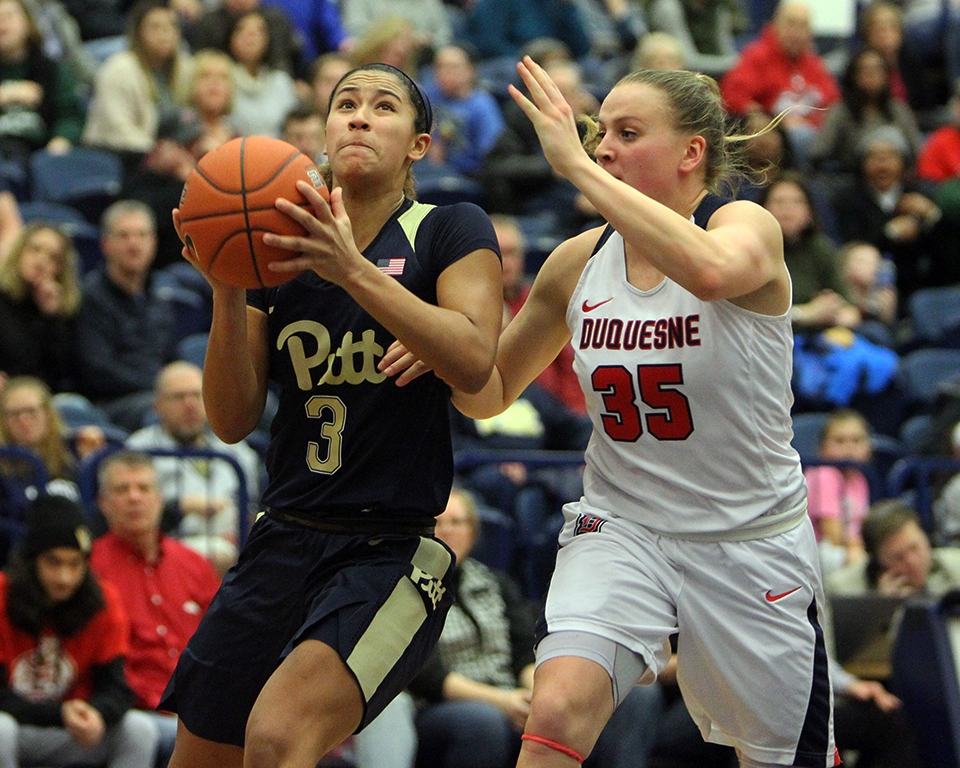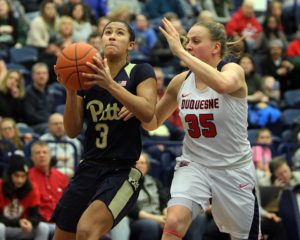

03/28/2019
By Zoe Stratos | Staff Columnist
With March Madness in full swing as of March 21, the worldwide obsession with NCAA men’s basketball began again with the number 10 seed Minnesota Golden Gophers upsetting the number 7 seed Louisville Cardinals 86-76.
Shortly after the men, on March 22, NCAA women’s basketball began with the number 1 seed Louisville Cardinals beating the number 16 seed Robert Morris Colonials 69-34.
Along with me, many of the people who watched the men’s opening game definitely didn’t watch the women’s game and probably had no idea who was even playing in the first place. Last year, around 13 million people tuned into the men’s final four games whereas around only 7 million tuned into the women’s final four games, according to the NCAA.
So, why is it that men’s basketball is more “hyped up” than women’s basketball?
I’m no exception to the problem. Ever since high school, I, and most other students, have mostly attended men’s games even when the women’s teams have proven to be more successful.
It often seems as if the women’s games are less “exciting” to viewers. In men’s games, the players always have fancy tricks and shots followed by celebration and screaming in support of one another.
The thought usually is that women can’t compare to the “hype.”
On the contrary, at least at my high school, the women’s games were far more exciting, and they won, too. I realized this and started attending women’s games as well as men’s games. The difference in women’s games were that the scores were close, the players communicated and the game was about the game, not about who was the best.
When I came to college, I expected the environment to change; however, that held not to be true. Duquesne student-athletes have voiced their disappointment in low attendance at women’s sports events, as well as the stark difference between men and women’s attendance rates.
With that said, the men’s basketball team ended their 2018-2019 season with an overall 19-13 record; the women’s basketball team ended theirs the same way. With teams equal in strength and wins, attendance and support should be equal, too.
The trend seems to carry over across other sports as well. In 2014, the men’s FIFA World Cup was viewed by around three billion people worldwide, whereas the women’s 2015 FIFA World Cup final was viewed by only around 750 million, according to FIFA.
With Duquesne soccer, the men’s team ended its 2018 season with a 4-9-3 record; the women’s team ended its with a 6-9-2 record. Both very close to one another, but the men’s team again attracted more viewers. One of the women’s team players even voiced to me that the women’s team themselves went to the men’s games all the time, but the men’s team didn’t always attend theirs.
The answer to the phenomenon is not exactly clear. Women are just as (if not more) talented than men, so viewership should not differ so much.
Even gathering statistics and information for this article proved difficult. In a Google search for NCAA basketball standings, records, viewership, etc., men’s information immediately came up. Meanwhile, I had to specifically search “women’s NCAA” to get the results I needed.
Not only this, but on NCAA’s website, the men’s and women’s basketball infographics for the 2018 championships differed greatly on how they presented their information.
On the men’s infographic, the broadcast section included viewership numbers from the start of the tournament until the end and the total number of countries that viewed the tournament. On the other hand, the women’s infographic only included the final four viewership numbers and a fact that stated it was voted the number one sports event on “Nielsen Social Top 5 ratings by interactions.”
The most frustrating fact is that viewers can only watch and make brackets for the men’s teams on the NCAA March Madness Live app and it’s evident on the same infographic. On the men’s, it shows the percentage of increase in streams and hours watched on the app, and on the women’s, the info graph only shows the amount of views they received on social media.
Even if viewers wanted to watch the women’s games, the differences in advertisement make it difficult for that even to happen. The low viewing availability is discouraging and unfair for the players, and it needs to be fixed.
Maybe if the media and colleges advertised women’s sports the same way they do men’s sports, viewership would be different. The “hype” can be just as great for women if it were shown off and appreciated more.




